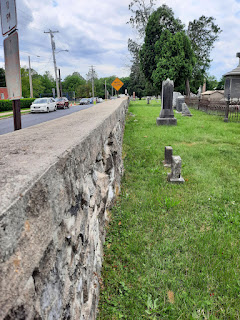View the Index of Unit Histories
 |
MACV shoulder sleeve
insignia (unit patch). |
The Military Assistance Command, Vietnam (MACV)The United States Military
Assistance Command, Vietnam, known as MACV (pronounced “mac-vee”), was a joint service command under the Department of
Defense. MACV was created on February 8, 1962, in order to increase assistance
to South Vietnam as well as command and control all advisory and assistance
efforts in Vietnam. The command was dissolved on March 29, 1973, after the
withdrawal of U.S. combat troops from Vietnam. MACV was the highest level of
command “in-country.” Therefore, the history of MACV is really the military
history of the Vietnam War.
Prior to WWII, the territory
that is the modern country of Vietnam was part of French Indochina, a colonial
possession of France. During the Second World War, the Japanese occupied the
country, temporarily removing French rule. At the end of the war, the French
returned to once again establish their authority over the region. However, a
communist revolutionary movement under the leadership of Ho Chi Minh, known as
the Viet Minh, had established itself by fighting the Japanese. Both the French and the Viet Minh were in a weakened
state after the war, so both existed in what would become North Vietnam for
several years. But Ho was a passionate Vietnamese nationalist and planned for
an independent, united, and communist Vietnam.
In what is called the
“Indochina War” in France, and the “Anti-French Resistance War” in Vietnam, the
Viet Minh fought the French for control of North Vietnam from December 1946
until France’s departure in August 1954. South Vietnam was granted independence
in 1949 as the State of Vietnam, an anti-communist country whose capital was
established in Saigon. After the defeat of the French, the Viet Minh
established the communist government of North Vietnam with their capital in
Hanoi.
During the Indochina War, the
United States provided some limited military assistance to France, mostly in
the form of military equipment, some naval and sir support, and CIA covert
operations. In September 1950, U.S. President Harry Truman sent the Military
Assistance Advisory Group (MAAG) to Vietnam to assist our French and Vietnamese
allies. With the departure of the French, the communist insurgency in South
Vietnam continued to grow, and with it, U.S. military aid. For example, in 1961
military aid jumped from $50 million per year to $144 million. U.S. advisors
were pushed down to the battalion level and their numbers increased from 746 in
1961 to over 3,400 when MAAG was placed under the command of MACV when it was
created in 1962.
The commanding general of
MACV (and MAAG) was General Paul Harkins. In May 1964, combat deployments
became too complicated for an advisory group to control. Therefore
reorganization was effected that expanded the role of MACV and absorbed MAAG's
mission and personnel. The following month General William Westmoreland took
command of Military Assistance Command, Vietnam. During his tenure, MACV would
grow to command and control the following major command components:
- -
United
States Army, Vietnam (USARV)
- -
I
Field Force, Vietnam (I FFV)
- -
II
Field Force, Vietnam (II FFV)
- -
XXIV
Corps
- -
III
Marine Amphibious Force (III MAF)
- -
Naval
Forces, Vietnam (NAVFORV)
- -
Seventh
Air Force (7AF)
- -
5th
Special Forces Group
- -
Civil
Operations and Revolutionary Development Support (CORDS)
- -
Studies
and Observations Group (SOG)
- -
Field
Advisory Element, MACV
The commanding general of
Military Assistance Command Vietnam (COMUSMACV) was therefore responsible for
four corps-sized maneuver commands, all naval and air assets within the
territorial borders of Vietnam, all special operations assets, as well as all military
advisors to South Vietnamese forces. At the height of American involvement in
the war in Vietnam, there was 9,430 Army personnel acting as advisors on the
district and battalion levels training, advising, and mentoring Vietnamese in
the Army of the Republic of Vietnam (ARVN), Republic of Vietnam Marine Corps,
Republic of Vietnam Navy and the Vietnam Air Force.
The major special operations
command within MACV was the Studies and Observation Group (SOG). Contrary to
popular belief, the acronym “SOG” does not officially stand for “Special
Operations Group.” Although “Studies and Observation” was an attempt to hide
what the command did, which was unconventional warfare and highly classified
operations throughout Vietnam, Laos, and Cambodia. MACV-SOG was comprised of
U.S. Army Special Forces (Green Berets), Navy SEAL teams, Air Force Combat
Controllers, Marine Recons, Air Force Special Operations pilots of the 90th
Special Operations Wing, and other special operations personnel.
Naval Forces Vietnam (NAVFORV)
was made up of those naval forces which were in direct operational support to
ground forces within the borders of South Vietnam. This excluded the aircraft
carriers, amphibious ships, and naval gunfire support. However, it did include
the Navy's units in the II, III, and IV Corps Tactical Zones. Over the course
of the war the Coastal Surveillance Force (Task Force 115), River Patrol Force
(Task Force 116), and Riverine Assault Force (Task Force 117) came under the
control of NAVFORV. TF 116 and TF 117 were used in the joint Army-Navy Mobile
Riverine Force. MACV, through the Commander Naval Forces, Vietnam (COMNAVFORV),
also commanded the Naval Support Activity, Saigon, and the NSA Danang. These
bases provided logistical support to the naval and marine forces in South
Vietnam. Also under NAVFORV were the Naval Advisory Group, the 3d Naval
Construction Brigade (the Seabees), the Military Sea Transportation Service
Office (coordinating sealift of supplies to Southeast Asia), the
Officer-in-Charge of Construction (civilian construction projects), the Naval
Research and Development Unit (testing new equipment in the field), and
Commander, Coast Guard Activities, Vietnam.
The news of the enemy’s Tet
Offensive which began on January 31, 1968, proved to be contrary to what
General Westmoreland had touted as “positive indicators” in the progress of the
war. The American public’s support for the war spiraled. In June 1968, General
Westmoreland was replaced by General Creighton Abrams. While Westmoreland is
best known for his prosecution known as “search and destroy,” Abrams
implemented the “winning of hearts and minds” and the “Vietnamization” of the
war. Abrams was largely successful, demonstrated through the ability of the
South Vietnamese Army to repel the NVA’s Easter Offensive of 1972. However,
public and political support for the war in Vietnam could never be regained
after Tet. Abrams was replaced by General Frederick Weyand in June 1972 and,
like Westmoreland before him, went on to serve as Chief of Staff of the Army.
General Weyand oversaw the
drawdown of U.S. armed forces in Vietnam during the last half of 1972. The
Paris Peace Accords that ended the United States' combat involvement in Vietnam
were signed on January 27, 1973. The agreement provided for a 60-day ceasefire
during which time all remaining American and other United Nations combat forces
were required to be withdrawn from Vietnam. Therefore, with no forces to
command, MACV was no longer needed. The command was disbanded on March 29,
1973. Any American military personnel remaining in Vietnam at that time came
under the control of the Defense Attaché Office (DAO) in Saigon.
The huge complex that was
built to house MACV Headquarters and the ARVN Joint General Staff at Tan Son
Nhut Airbase was dubbed the “Pentagon East” during the war. After the
disbanding of MACV, Pentagon East housed the DAO. This compound was used as one
of the two evacuation points for Operation Frequent Wind, the removal of
American civilian and Vietnamese evacuees from Vietnam during the Fall of
Saigon in April 1975 (the other was the U.S. Embassy, Saigon). It is also the
site of the last American ground casualties in Vietnam. At 3:30 a.m. on April
29, 1975, a North Vietnamese rocket hit Guard Post #1 at the gate of the DAO
Compound, killing 21-year-old Marine Corporal Charles McMahon and 19-year-old
Lance Corporal Darwin Lee Judge.
View the Index of Unit Histories



























